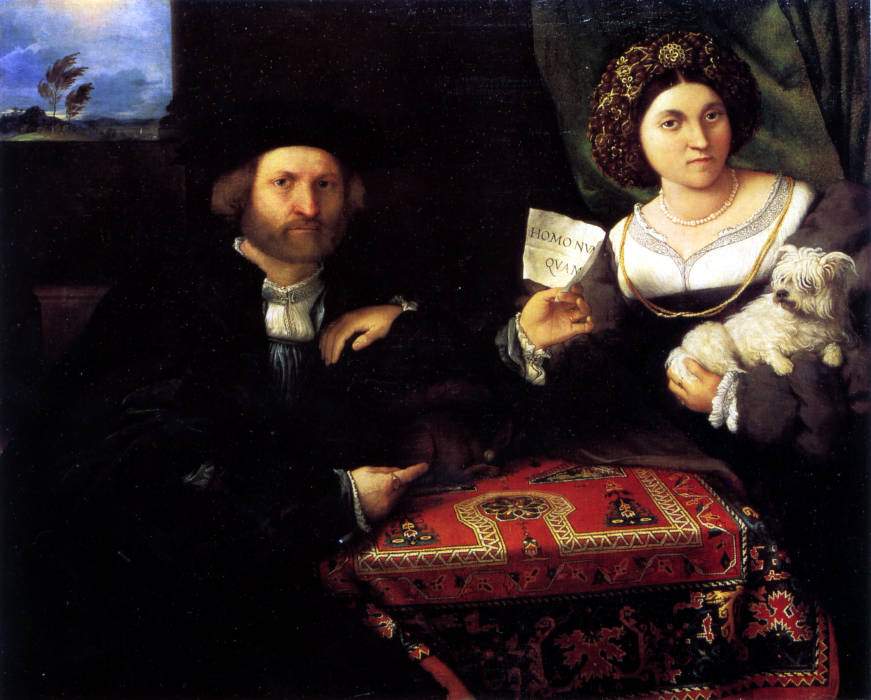The first major exhibition dedicated to Lorenzo Lotto's portraits is in Madrid
In Madrid, the Museo del Prado is hosting, from June 19 to September 30, 2018, the exhibition Lorenzo Lotto. Retratos, entirely dedicated to the portraits of the great Lorenzo Lotto (Venice, 1480 - Loreto, 1557): this is, in particular, the first major monographic exhibition ever devoted to Lotto’s portraiture. The unparalleled intensity of Lotto’s portraits, the acumen of his psychological introspection, and the finesse that enabled him to create incredibly realistic depictions make him the first modern portraitist. At the Prado, curators Enrico Maria dal Pozzolo (University of Verona) and Miguel Falomir (director of the Prado) have brought together thirty-eight paintings, ten drawings, one print and about fifteen sculptures and objects to create a fascinatingly dense journey that delves into many aspects of Lotto’s portraiture (the variety typology, psychological depth, symbolic complexity) as well as certain innovative features, starting with the expressive solutions in portrait and religious painting, the importance of the objects included in the portraits as witnesses of the material culture of the time, or the creative process behind the paintings. The way Lotto conceived and executed his portraits is also investigated, and as a result, given the scarcity of technical studies, drawings play a critically important role, and the Madrid exhibition offers a rare opportunity to see drawings and paintings side by side.
The exhibition includes works from Venice, Treviso, Bergamo, Rome, and the Marche, covering a span of Lorenzo Lotto’s fifty-year career: from his early experiences in the wake of the art of Antonello da Messina read through Alvise Vivarini, as well as that of Giovanni Bellini, to works influenced by the influences exerted by Giorgione, Raphael, Leonardo, and Titian. Lotto reworked all these contributions to endow himself with a language of his own in which looks, gestures, and objects transcend physical description to reveal the subjects’ deepest feelings. Lorenzo Lotto’s portraits have a formidable narrative potential, inviting us to imagine the lives of the effigies and offering a vivid testimony of an Italy in profound transformation.
The exhibition’s main attractions also include the presence of the drawings, which are almost always absent from exhibitions devoted to Lorenzo Lotto. The Madrid exhibition brings together several drawings attributable to Lotto: some must have been conceived as preparatory studies for portraits, and are characterized by the squares to be “transported” on panel or canvas, while others present a state of fineness that leads one to consider them autonomous works, probably conceived as gifts. Thanks to the Book of Different Expenses, we know about the variety of materials with which Lotto made his drawings (charcoal, black stone, white chalk, and other materials), which clearly restore to us the artist’s versatility as a draughtsman. In addition, the drawings are juxtaposed with an oil on paper, recently attributed to Lorenzo Lotto, a sketch that stands out for its freshness and illustrates a documented use of oil, but of which very few examples remain.
What’s more, the exhibition also investigates cryptortraits, a specialty that Lotto cultivated throughout his career: this involved presenting effigies with attributes typical of the characters with whom they identified (for example, a pagan goddess such as Venus, a classical heroine or a saint toward whom they had a particular devotion). Portraits of Dominicans with the attributes of the order’s saints were particularly abundant, and the exhibition includes several examples. It is most likely that these identifications were commissioned by the communities of clergymen as “mirrors of virtue” of their members, but it is certain that Lotto often succeeded in achieving such overlap between saint and effigy that it was dangerously ambiguous.
Lorenzo Lotto. Retratos will then be concluded by an international congress that will take place in Madrid on September 24 and 25 and will be attended by leading world experts on Lotto’s art. The exhibition can be visited Monday through Saturday, 10 a.m. to 8 p.m., and Sundays and holidays, 10 a.m. to 7 p.m. It can be accessed with the Prado’s single-entry ticket, costing 15 euros (full price), with which one can visit the permanent collection, the exhibition Lorenzo Lotto. Retratos and all temporary exhibitions. For those who enter Monday through Saturday from 6 to 8 p.m. and Sundays and holidays from 5 to 7 p.m. there is a discount that allows them to pay 7.50 euros, while groups who intend to visit the exhibition during the same hours have an additional discount that allows them to enter as oli 3.75 euros. Audio guides in Spanish, English, French, Italian and Korean are available for 3.50 euros (the exhibition + museum audio guide costs 6 euros instead). The catalog is the first publication dedicated to Lorenzo Lotto’s portraits and follows the steps of his artistic career. Edited by Miguel Falomir and Enrico Maria dal Pozzolo with the collaboration of Matthias Wivel, it includes specialized texts that address technical, material, social and iconological aspects inherent in the portraits (as well as a review of documentary sources for their study). More info on the Prado website.
Image: Lorenzo Lotto, Portrait of a Married Couple (1523-1524; oil on canvas, 96 x 116 cm; St. Petersburg, Hermitage)
 |
| The first major exhibition dedicated to Lorenzo Lotto's portraits is in Madrid |
Warning: the translation into English of the original Italian article was created using automatic tools. We undertake to review all articles, but we do not guarantee the total absence of inaccuracies in the translation due to the program. You can find the original by clicking on the ITA button. If you find any mistake,please contact us.





























